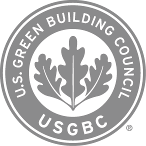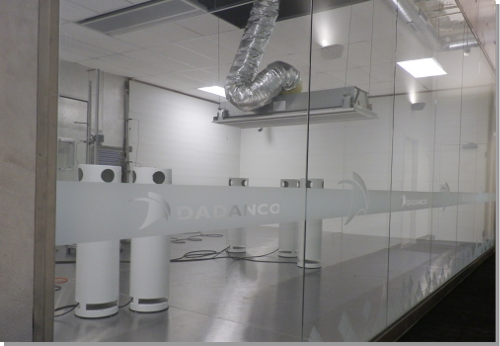A common concern when considering chilled beams in any application is the potential for condensation forming on the coils causing droplets of water to fall in the conditioned space. This fear has resulted in the hesitation of some engineers to specify chilled beams, particularly in humid climates. Chilled beams can be applied successfully in all climates, regardless of outside air conditions. The humid outside air is dehumidified by the air handling unit(s) before it is delivered to the chilled beams, so the only sources of moisture that would concern the chilled beams are those within the conditioned space, typically the people occupying the space.
As with any HVAC system, there are parameters that must be considered when designing a project to include active chilled beams. According to the Active and Passive Beam Application Design Guide by ASHRAE “The implementation of an adequate chilled water control system, together with the supply of an adequate amount of correctly conditioned primary air, is sufficient to avoid the occurrence of condensation on the beams.” As long as the dew point temperature (a measure of humidity) of the room air is kept below the entering chilled water temperature it is impossible for condensation to form on the chilled beam.
In order for condensation to form on the chilled beam coil, the HVAC system would need to be performing well outside of the design parameters for an extended period of time. The Building Automation System (BAS) would sense this and take corrective actions before it becomes a problem by: 1) sending more primary air to the chilled beam by either opening an upstream VAV box or motorized damper (if applicable), 2) further dehumidifying the primary air at the air handler, 3) or raising the entering chilled water by several degrees so it is no longer below the room dew point. An additional level of protection can be gained by installing pipe condensation sensors at each chilled beam zone which close the control valve if condensation starts to form on the supply water of the chilled beam zone.
Air “leaking” into a building through a poor envelope or coming in through operable windows in perimeter zones is not ideal, but there are steps that can be taken to prevent condensation. In cases of buildings with a bad envelope, make sure to positively pressurize the inside of the building while assuming some infiltration in the load calculations for each room. Controls, such as window switches or room dew point sensors, can be used to stop the flow of chilled water or take other actions, when conditions warrant, in buildings with operable windows.



